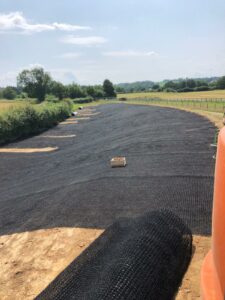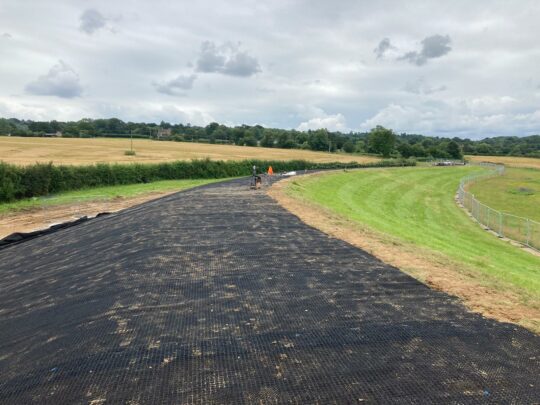Project Description
Communities in Tonbridge and Hildenborough are at risk of flooding from the River Medway, with flooding occurring in these areas in 1960, 1963, 1968, 1974, 2001 and as recently as 2013/14.
The most significant flooding occurred in 1968 and the Leigh flood storage area (FSA) was built in response to reduce the risk of future flooding to approximately 1,200 homes and businesses.

Tonbridge flooding in 1968
The Challenge
Following 110mm of heavy rainfall between the 19-24 December 2013, the primary flood storage embankment came within 1cm of the maximum storage level. With the ongoing threat from heavier rainfall events due to climate change, the Environment Agency is undertaking work to increase the capacity of the Leigh FSA to help further reduce the risk of flooding to local homes and businesses. More details on the history and plans for the FSA can be found in this Environment Agency project video: https://www.youtube.com/watch?v=9FVsi0WNa50&t=58s

The Leigh FSA during flooding in the winter of 2013
Currently the flood storage area can legally store water to a maximum level of 28.05 metres above ordnance datum (AOD), as measured by the control structure. Investigations have shown that increasing this storage level to 28.6 metres AOD will reduce the flood risk for over 1,400 homes in Tonbridge and Hildenborough. The storage of water to this level requires an additional 16.4 hectares of land to increase the capacity by 24%, to over 7 million cubic metres. The additional land required for the storage area would also involve reinforcement of the primary embankment in order to withstand overtopping.

River Medway control structure illustration (left) and flood storage area map (right)
The Solution
In January 2021 the Environment Agency received planning permission to proceed with the essential works required to upgrade the FSA under the Reservoirs Act 1975.
These works involved lifting the topsoil of the existing 1.5 km main embankment and laying Erosamat 3/20Z 500M Turf Reinforcement Mat reinforcing materials in accordance with CIRIA 116 report recommendations. The reinforced turf matting layer was then re-covered with a layer of soil and sown with grass to further stabilise the surface. Without reinforcement, the turf would quickly become uprooted during overtopping and the integrity of the embankment structures would be at risk of failure.
ABG has gained important data from previous spillway projects, particularly at Aller Moor in Somerset where unvegetated Erosamat Type 3/20Z 500M was demonstrated to provide sufficient protection for embankment spillway flow velocities exceeding 4 m/s over prolonged flood periods, with fully vegetated Erosamat 3/20Z 500M capable of hydraulic loadings in excess of 6 m/s. The performance of the Erosamat solution ensures the Leigh – Hildenborough flood embankment can withstand future overtopping into the additional storage area and help to safely reduce the flood risk to Tonbridge, Hildenborough and downstream communities into the future.


Erosamat Type 3/20Z 500M (above left) and being installed at the Leigh FSA (right)
The ABG Service
ABG’s engineering department assisted the consulting engineers JBA by reviewing the site design drawings and installation details.




